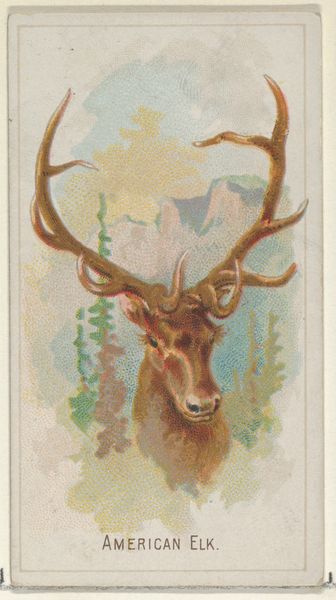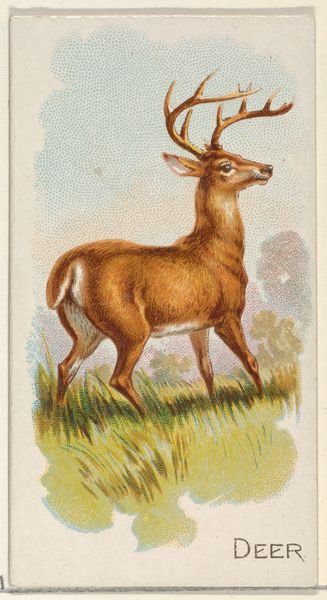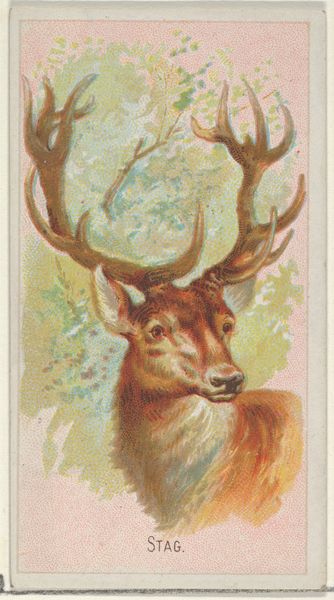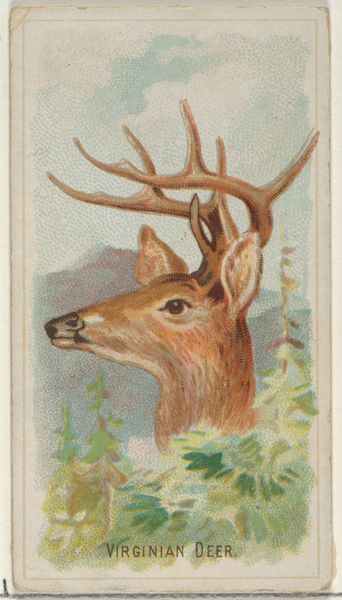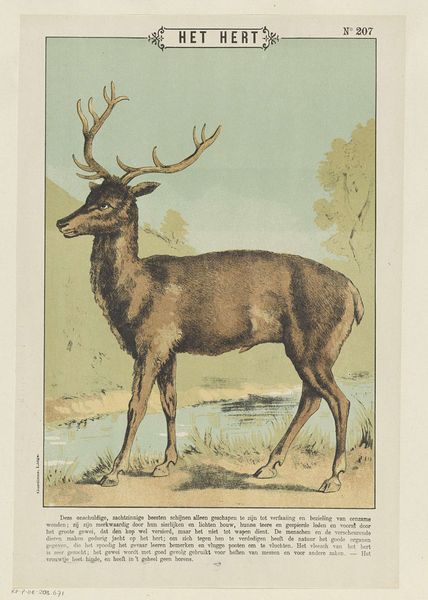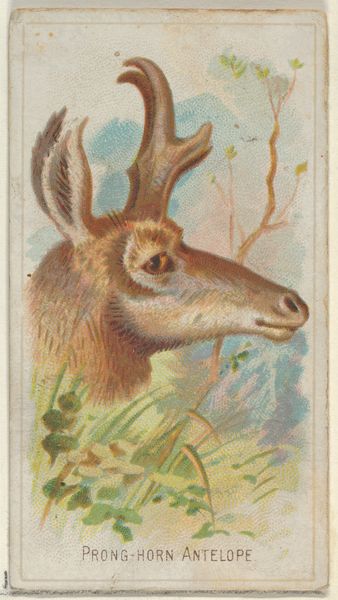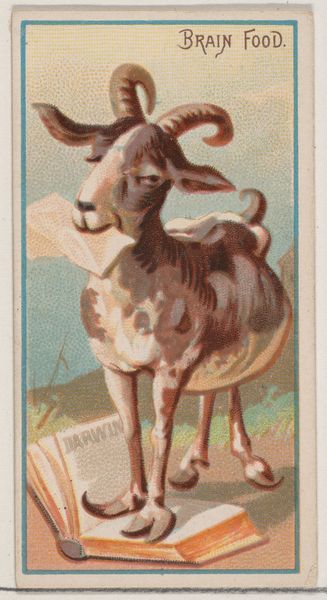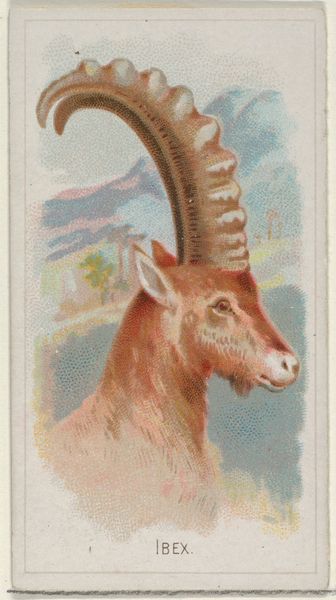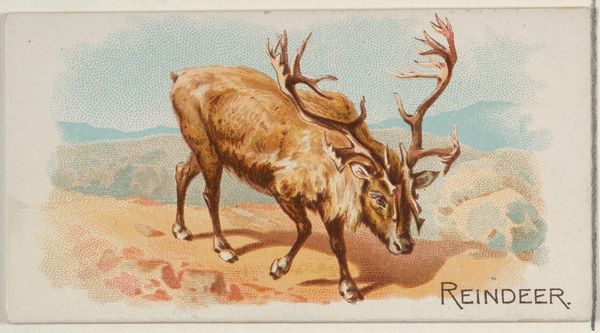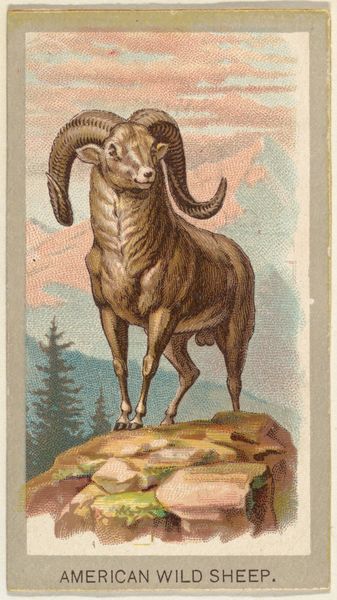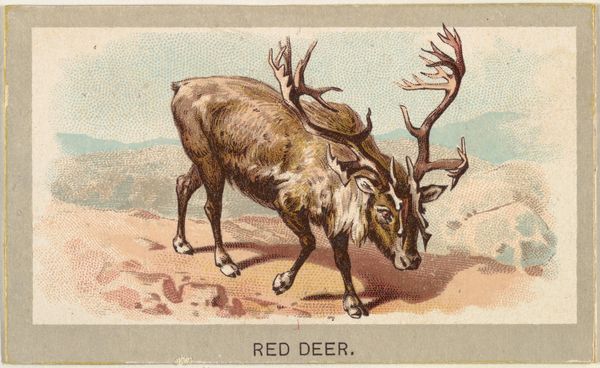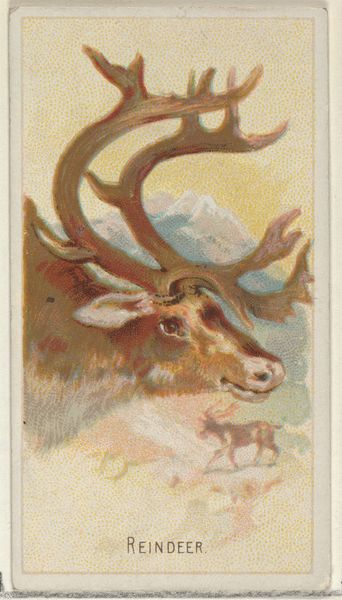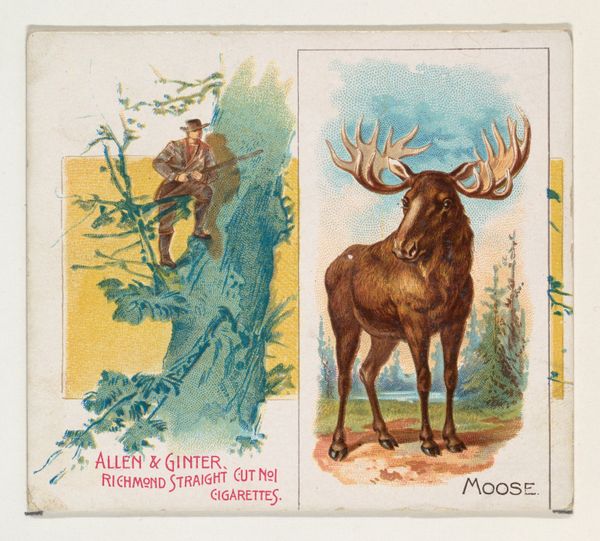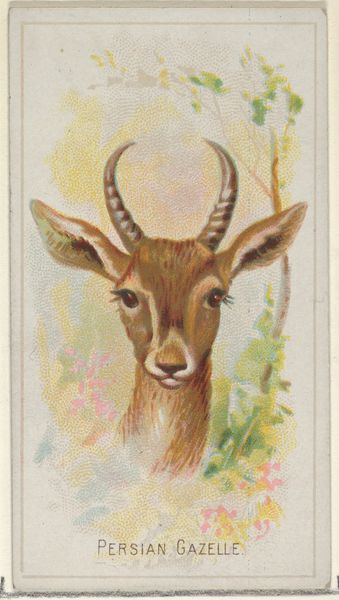
Moose, from the Quadrupeds series (N21) for Allen & Ginter Cigarettes 1890
0:00
0:00
# print
#
landscape
#
coloured pencil
Dimensions: Sheet: 2 3/4 x 1 1/2 in. (7 x 3.8 cm)
Copyright: Public Domain
Curator: This striking image is titled "Moose, from the Quadrupeds series (N21) for Allen & Ginter Cigarettes." It's dated 1890, and the medium is colored pencil and print. Editor: Well, my first thought is the unusual colour palette; muted blues and browns. It feels… deliberately calm, which is odd for a moose! Curator: It's part of a series of trade cards. Allen & Ginter, a cigarette manufacturer, included these cards in their packaging as a promotional item. Think of them as miniature artworks intended to entice consumers. Editor: So, the "high art" of coloured pencil drawing, carefully printed, used to shift units of tobacco. Where’s the artistry, and where does it just become pure commodity fetishism? Was there a debate about this conflation in artistic circles at the time? Curator: Absolutely! There was a vibrant discourse surrounding the commercialization of art and its impact on public taste and artistic integrity. These cards, though seemingly trivial, were instrumental in democratizing access to art. Before mass media, many people's primary visual exposure came through advertising. Editor: Democratising, yes, but through addictive substances. It’s all about access, then isn't it? Distribution and, obviously, market penetration. These images are quite sophisticated for mass consumption, what was the design inspiration? Curator: Scholars often point to Japonisme, which was extremely popular then. Notice the flattened perspective, and emphasis on naturalism characteristic of ukiyo-e prints that had a strong influence on Western art at this time. They allowed manufacturers like Allen & Ginter to position their products within a cultural moment. Editor: It certainly highlights how visual culture becomes interwoven with capitalist expansion. Looking at the moose itself, this depiction naturalizes certain ideas. Is it powerful or docile, threatening or friendly? All that gets rolled into a product and puffs of smoke! Curator: Precisely! These cards also played a role in shaping cultural perceptions of wildlife, often exoticizing animals from different parts of the world, furthering a sort of imagined global geography. It's fascinating how something so small could have such a layered social impact. Editor: Yes, the small things are exactly what’s interesting: what work did create this seemingly small piece of promotional material? Considering that can highlight how industries use art to mold opinions and fuel desires. Curator: A valuable point. Understanding the art's journey from the artist's hand to its place within a commercial ecosystem gives us insight. Editor: Absolutely. Every print is the final point in the manufacturing chain.
Comments
No comments
Be the first to comment and join the conversation on the ultimate creative platform.
